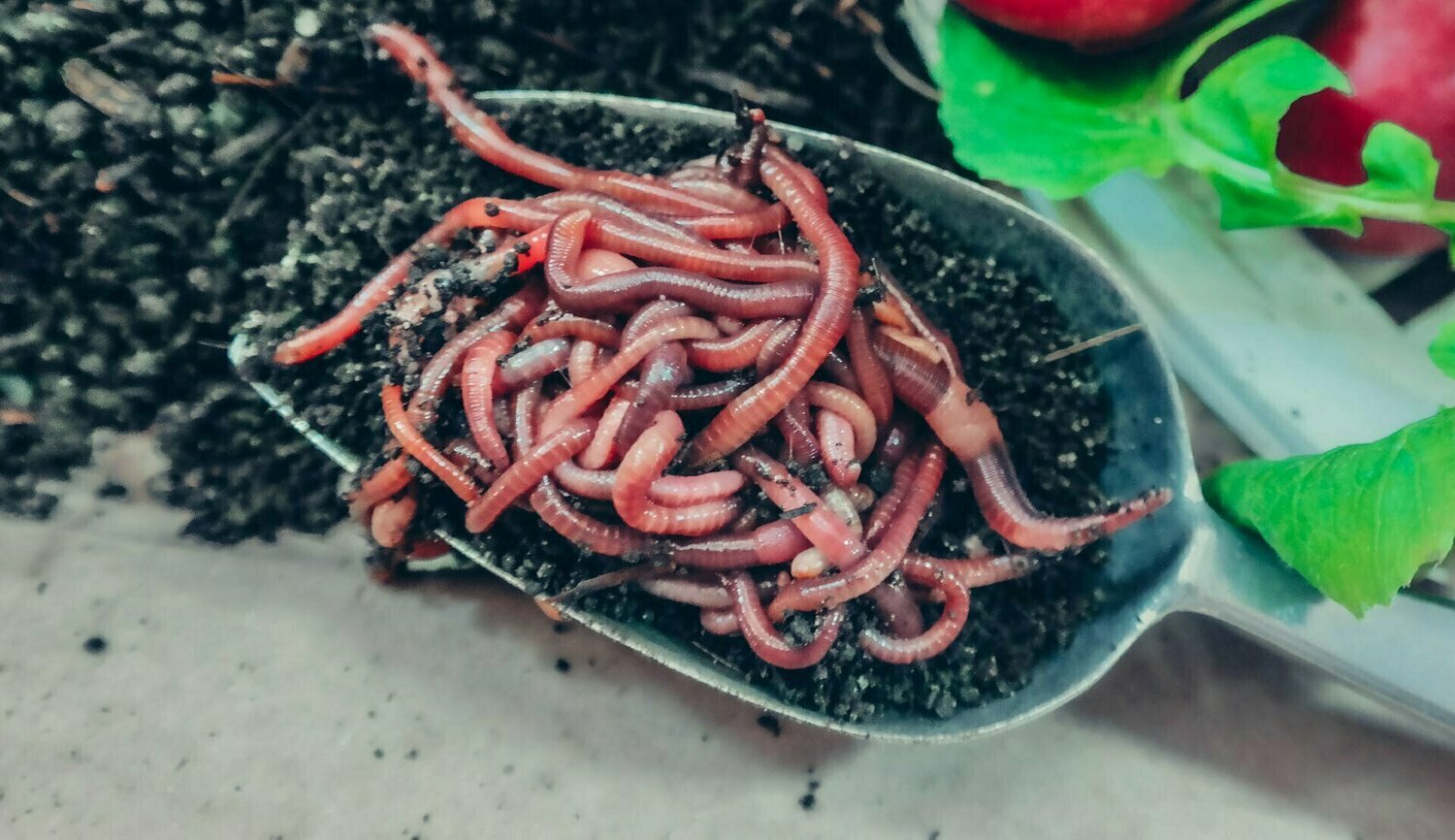Mastering Red Wiggler Composting: Essential Practices for Healthy And Balanced Composting
Mastering Red Wiggler Composting: Essential Practices for Healthy And Balanced Composting
Blog Article
Comprehending the Conveniences of Red Wiggler Composting: Exactly How This Reliable Approach Transforms Organic Waste Into Nutrient-Rich Dirt Amendments
Red Wiggler composting, using the species Eisenia fetida, offers a compelling method to organic waste management, converting cooking area scraps and yard particles into valuable soil amendments. This approach not just enhances soil fertility yet likewise addresses pressing ecological worries, consisting of landfill waste reduction and greenhouse gas discharges. As we explore the details of this procedure, the diverse benefits it offers might expose unanticipated understandings into lasting techniques and environmental equilibrium. Comprehending these dimensions might prompt a reevaluation of how we regard waste and its potential payments to a much healthier planet.
What Are Red Wigglers?
Red wigglers, clinically referred to as Eisenia fetida, are a species of earthworm that play an essential duty in vermicomposting systems. These worms are characterized by their reddish-brown color, segmented bodies, and a distinctive capacity to prosper in organic-rich environments, making them perfect for composting applications - Red Wiggler Composting. Unlike their garden-dwelling equivalents, red wigglers prefer to inhabit the top layers of soil, where rotting issue is plentiful
Normally measuring between 3 to 4 inches in size, red wigglers have a high reproductive price, allowing them to increase rapidly under ideal problems. They possess a distinct digestive system that enables them to process natural waste successfully, converting it into nutrient-rich spreadings, which are extremely helpful for plant development.
Their resistance to varying dampness degrees and temperature level varies better enhances their utility in vermicomposting setups, making them a favored choice among composting enthusiasts. Additionally, red wigglers are cardio organisms, which necessitates a well-aerated composting environment, guaranteeing efficient disintegration. Understanding the biological attributes and habits of red wigglers is necessary for enhancing their use in lasting waste management techniques.

Advantages of Vermicomposting
Taking advantage of the power of vermicomposting offers a wide variety of agricultural and environmental advantages. It considerably decreases organic waste in landfills, consequently reducing methane discharges, a powerful greenhouse gas. By drawing away food scraps and lawn waste to vermicomposting, we sustain a more sustainable waste administration system.
In addition, vermicomposting boosts soil health and wellness. The castings produced by red wigglers are rich in essential nutrients, microbes, and enzymes, improving dirt structure and fertility. This nutrient-rich change advertises durable plant development and raises water retention, minimizing the need for chemical fertilizers.
Additionally, vermicomposting fosters biodiversity in the soil ecosystem. The introduction of beneficial microbes from worm spreadings aids in condition reductions and nutrient biking, creating a healthier environment for plants.
Financially, vermicomposting reduces the expenses linked with chemical inputs and waste disposal. Gardeners and farmers can grow premium fruit and vegetables at lower costs, contributing to food safety and sustainability.
How to Start Composting
Beginning a composting endeavor can be a straightforward and gratifying procedure. This will help keep a balanced temperature, critical for the composting procedure.
Gather natural products such as cooking area scraps, yard waste, and shredded paper. Objective for a balanced mix of 'green' materials, high in nitrogen (e.g., fruit scraps, coffee grounds), and 'brown' products, rich in carbon (e.g., dried fallen leaves, cardboard) A ratio of roughly 2:1 eco-friendly to brownish products is perfect.
Start layering your products, ensuring sufficient air flow by transforming the heap frequently. This promotes cardiovascular decomposition, minimizing smells and speeding up the procedure. Display moisture levels; the garden compost needs to seem like a moist sponge but not overly damp.
Nutrient Account of Vermicompost
Composting, especially with red wigglers, produces a nutrient-rich item understood as vermicompost. Furthermore, it provides trace elements like iron, calcium, and magnesium, promoting robust plant advancement and enhancing dirt health and wellness.
The microbial task existing in vermicompost better enhances its profile, presenting valuable germs and fungi that promote vitamins and mineral schedule and uptake in plants. This biological part help in suppressing plant diseases and boosting soil structure, bring about boosted water retention and aeration.

Ecological Influence of Composting
The ecological influence of composting, specifically with using red wigglers, is multifaceted and profound. This approach substantially reduces the quantity of natural waste sent to garbage dumps, which subsequently lessens greenhouse gas discharges, specifically methane-- a powerful factor to climate modification. By drawing away natural products from landfills, red wiggler composting not only assists reduce ecological deterioration yet also promotes sustainable their explanation waste administration techniques.

Moreover, composting contributes to carbon sequestration, as the procedure records co2 from the environment and stores it in the soil. This natural procedure help in combating environment modification while improving the dirt - Red Wiggler Composting. Generally, red wiggler composting offers a feasible, green remedy for waste monitoring and environmental sustainability, promoting much healthier communities and a more sustainable future
Verdict
Finally, Red Wiggler composting acts as an efficient technique for converting natural waste read the full info here right into valuable soil modifications. The procedure not only enhances dirt fertility and framework however also minimizes ecological problems connected with waste disposal. By using Eisenia fetida, this type of vermicomposting adds to improved biodiversity and sustains sustainable agricultural practices. Inevitably, Red Wiggler composting plays a vital duty in promoting much healthier communities and addressing the challenges of environment modification.
Red Wiggler composting, utilizing the species Eisenia fetida, offers a compelling strategy to organic waste monitoring, transforming kitchen area scraps and backyard debris into beneficial soil modifications. Unlike their garden-dwelling counterparts, red wigglers like to inhabit the upper layers of dirt, where rotting matter is bountiful.
The castings generated by red wigglers are rich in vital nutrients, germs, and enzymes, improving soil structure and fertility. The nutrient-rich results of red wiggler task improve dirt structure, boost water retention, and promote biodiversity within the dirt ecosystem.In final thought, Red Wiggler composting offers as a reliable method for transforming organic waste right into valuable dirt modifications.
Report this page